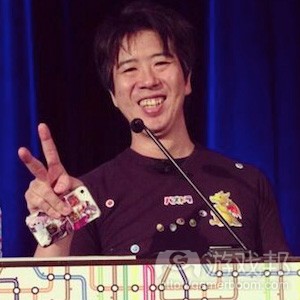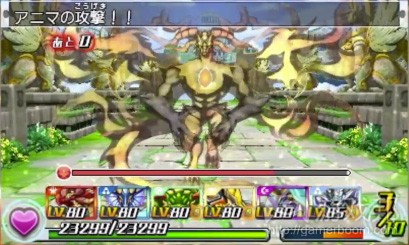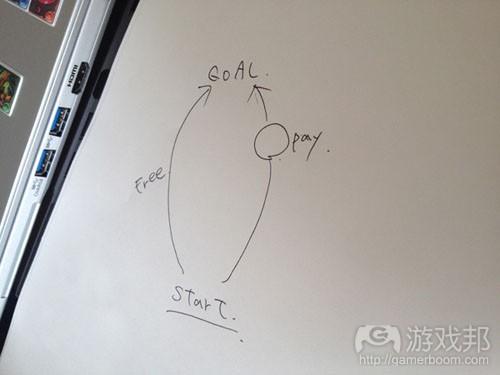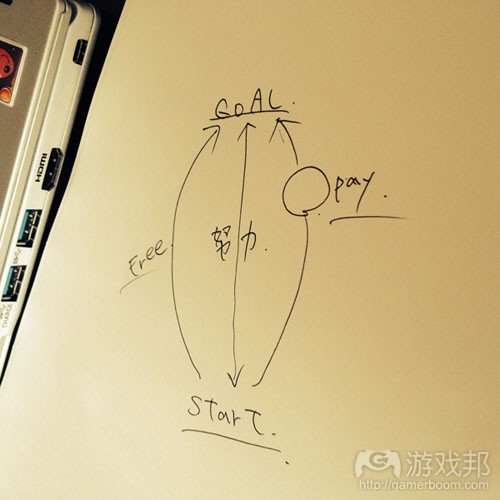Kazuki morishita谈GungHo的发展策略
作者:Christian Nutt
一方面,GungHo Online Entertainment与King和Supercell一样处于同样的阶层,即拥有大量的股份:这是一家世界级的手机游戏公司,其最热门的游戏《智龙迷城》拥有数百万的安装率,并因此获得了巨大的收益。
但是它与这些公司也具有很大的不同点。这是一家来自日本的公司,所以从文化上就具有很大的差异性。它同样还拥有一些之前独立的工作室,即专注于开发主机游戏(游戏邦注:最出名的便是Grasshopper Manufacture,即以创造了经典的《Killer7》和《No More Heroes》而出名)。
它同样也因为创始人Kazuki Morishita而具有差异性,Morishita仍然致力于主机领域,即在利基平台为利基用户设计游戏。《智龙迷城》团队甚至经过大量修改而创造了3DS版本游戏《智龙迷城Z》。
Morishita是如何看待公众对于他们公司的审视?关于免费游戏他的想法是什么,他会对那些不信任它们的怀疑论者说些什么?我们将通过本文的采访解答这些问题。
我注意到你已经在西方国家多次宣告了《智龙迷城》的成功。这是否是你在2014年所强调的?
从我们的优先顺序来看,基于我们的全球倡议,显然日本是我们现在首要瞄准的目标。但是在日本以外的国家,美国排名第二。所以我们的确尝试着专注于美国市场。
你是如何看待全球的社交游戏市场?这是否是真的全球社交游戏市场,或者只是不同国家间的区别?
过去我常常会想—-世界被分割成了不同部分。而现在我尝试着不再这么想,显然这只会让我们拉长彼此间的距离。
我不可能以西方人的心态进行思考,因为我是一个日本人。如果再世的话可能我会变成西方人,但这却另当别论了。
我们瞄准的是美国和日本市场,但是我却从未真正基于用户基础去创造游戏。作为一家公司,我们创造了有利于GungHo的内容。从内部来讲,只要我们认为什么是好的,我们就会尝试着去发行它。
我们并未尝试着专注于用户基础—-我们尝试着创造一款从质量上来看足够突出,且我们认为很棒的游戏。如果游戏成功了,那就太好了。而如果未能成功,我们将回到办公室重新思考其它理念。
从我们所提供的服务来看,不管是基于后端或用户支持,所有的一切都必须趋于文化化,所以我们会基于所面对的国家去创造游戏。
我认为这是一个具有不同层面且一步一步发展的过程。显然,这需要花费许多时间。但我认为这是我们当下所专注的内容。我们选择扎扎实实地前进,希望在美国市场也能像在日本这样具有立足点。
从游戏来看,我们并未真正专注于创造社交游戏。显然业务模式是完全不同的,但基于我们创造游戏的方式,当我们尝试着去创造一款游戏时,我们便会将其放在创造主机游戏同等的位置上—-不管它是手机游戏还是主机游戏。
甚至连我们的手机游戏也有许多来自主机游戏的体验。我们有许多主机游戏创造者,而现在这些人也在我们公司创造着我们的手机游戏。
我真的认为我们所获得的成功是源自我们是基于主机模式创造游戏,并将我们的游戏真正当成自己所创造过的主机游戏那般。
显然,《智龙迷城》是作为一款智能手机游戏发展起来,但之后它演变成了《智龙迷城Z》,即3DS版本。在发行后一个月内这款游戏便获得了100万的销量,所以我们相信这是一大优势。这是同样的团队所完成的内容。不管是智能手机还是主机,我们都是由同样的团队,同样的成员进行创造。
任天堂3DS版本的《智龙迷城Z》
你说你将自己所拥有的强大的主机背景带到了手机游戏领域。这是否是你创造这些游戏所具有的不同点?你的这些知识或方法是否是直接进行转换?
从业务模式来看,这是后来才出现的。显然,就像我之前所提到的,我们专注于创造优秀的游戏。游戏好坏是最基本的元素,也是我们开发的核心点。而业务模式是之后考虑的内容。
我真的非常看重游戏的创造性方面。我也进行了许多游戏设计。当我在设计游戏时,我并不会去考虑销售潜力或盈利。
从2012年以来我们已经发行了6款收集游戏。它们都具有较强的营利性。其中的4款在一个月内便创造了超过100万美元的收益。显然,《智龙迷城》是最热门的一款,所以每个人都会提到这款游戏。但我们也有其它出色的游戏。其中的一些游戏每个月能够帮我们赚到好几百万美元。当我们在创造游戏时不会太多地去考虑销量,但显然销量是紧跟于质量后我们所考虑的因素。
GungHo的诞生已经有一段时间了。当突然有许多有许多来自世界各地的人开始关注你们公司时,你的感受是怎样的?
关于这种关注,可以说所有人都在审视我们的销量。就像人们会说:“《智龙迷城》已经取得了成功。他们必须寻找一些新的发展内容。”有时候他们会拿我们在2013年第三季度的销量于第二季度相比较。事实是销量出现了下降。不过我会对他们说,相信我,第四季度会上升的,结果便是如此。
第四季度可能是我们获得的最高的销量。原因很简单。因为假期的关系我们的MAU出现了巨大的提升。特殊的活动也推动着我们的ARPU的上升。但是我们并不是真的想要抬高ARPU。从我们的角度来看,我们并不希望它太高。
如果在这一季度ARPU上升了,那么我们便希望它在下个季度可以稍微下降些。ARPU的上升就像篝火似得。如果你保持添柴,火焰便会继续燃烧,但一旦你用尽了木柴,火焰便会变弱,甚至熄灭。这便是我们尝试着避免的情况。
我们拥有自己的业务逻辑。审视是好事,但我们也有自己的业务策略。人们可以审视我们,但我们必须做好自己的事,并遵循自己的业务模式。并不是说我们忽视这些审视,只是我们不是那么看重它罢了。
我敢保证有些人是喜欢我们的,但肯定也有人讨厌GungHo。这是必然的情况。我们将会继续专注于创造优秀的游戏。这便是我们想要做的事。
我想手机游戏领域中的很多人会着眼于你们公司并说道:“为什么你们仍然在面向PlayStation Vita创造游戏?为什么你们不收购Grasshopper Manufacture?”
我不知道为什么人们会对我们所做的事抱以消极的看法。
不管是智能手机,PlayStation 4或者Vita,它们都只是平台。这是我们的主动权。我们能够基于所拥有的理念决定面向哪个平台发行游戏。
当你去比较它们时,显然智能手机市场正在发展着,从外部角度看来的确是如此。但我们却没有理由因此而只专注于智能手机。
我仍然在玩主机游戏。我更倾向于主机玩家。不管是智能手机游戏还是主机游戏,它们具有共同点,也具有差异性,是两头完全不同的猛兽。
面向主机和智能手机创造游戏的方法是完全不同的。基于主机游戏,你将拥有一批死忠粉丝,你将努力迎合硬核用户的需求。而关于智能手机,它更加休闲,显然是用于消磨时间的工具。
这就像是电视与电影间的区别。这就像是吃薯条与吃完整的一餐的区别。难道就因为麦当劳的出现我们就不能再吃牛排和龙虾了吗?
去年,日本市场因为手机应用的消费者数量而获得了巨大的关注。你是如何看待这种情况?
对此我并不是特别感兴趣。我并不认为这将作为一个国家的差异性。就像我之前提到的,我只是想要制作优秀的游戏。不管谁在玩游戏,只要他们喜欢它,我便会感到欣慰。
因为如此,许多西方手机工作室开始大肆瞄准日本市场。似乎你并不会以业务角度去看待问题,但是对此你有何看法呢?
我认为其它公司进入日本市场是个很棒的发展。显然这种情况并不会改变我们的业务模式,但从主机方面来看,我确实玩了许多西方游戏。可以说我玩过的大多数游戏都属于西方游戏。
我希望更多西方公司能够进入日本市场,因为这对于用户来说是件好事,他们将有更多机会去了解西方游戏。我也想要看到日本玩家在玩西方游戏。
这是一种双向的发展。如果一间美国汽车公司进入日本的话会怎样?这自然很好。但如果是日本的汽车公司进入美国市场呢?没有人会在乎它。我敢保证人们尽管会去谈论它,但却不会将其当成什么大事件。
现在GungHo拥有20%的Supercell的股份。你是如何定义如今GungHo与Supercell之间的关系。
从开发合作来看,我们真的并未期待这种情况会这么快出现——因为我们希望他们能够创造自己的游戏,而我们也能创造我们的游戏。但作为GungHo我们想要在全球市场发挥更大的作用,而与Supercell的合作无疑是最适当的方法。
当然,在与Supercell的合作中,我们想要在推广基础方面更好地利用他们。显然,他们的服务领域涉及好几个国家,他们也有很棒的推广理念与经验。这便是我们想要学习的地方,并希望通过他们收集更多数据,从而更有效地合作。
全球市场是关于24小时的用户粘性,作为一家媒体门店,我们认为他们真的很棒,因为他们拥有24小时的媒体覆盖服务。这也是我们想要与之合作的地方。
除了3DS,日本的主机市场似乎比PlayStation 2时代衰败了许多。你是否认为你们还可以在下一代的主机发展中还能够提升用户数量?
显然过去早已过去,所以我不认为我们需要回到过去的情况,因为情况一直在发生着改变。从智能手机市场来看,显然,智能手机成为了非游戏玩家开始游戏的一种简单的方法。
这些非游戏玩家(有些甚至会变成真正的玩家)喜欢我们现在的状态。这将打开一个于PS2和PS1时代完全不同的新时代。显然这是件好事。不管过去发生了什么都是过去的事,新事物总是会出现的。
你知道,任天堂在这方面采取了相反的做法。显然,他们一直在Gamecube和N64上继续努力着,但他们在Wii和DS上也做得很好。我敢保证他们拥有很棒的理念并且能够落实行动。这是我们想要努力的方向。不过他们显然也拥有巨大的资金。
你是否看过智能手机玩家去尝试《智龙迷城》的3DS版本?你是否能够采取什么方法去证明这点?你是否看到他们变成“玩家”的趋势?
从休闲玩家转变成硬核玩家的路径来看,我不认为这是我们能够强制改变的。关于《智龙迷城》过度到《智龙迷城Z》,我敢保证有人已经走上了这条路,但是我们却不具有任何数据去支持这一变化。
当我们创造了《智龙迷城Z》时,它其实更加专注于那些未拥有智能手机的玩家—-还包括小孩。这是我们的专注点,而我们的市场营销也支持着这一专注点。我认为可能真的有人从智能手机走到了主机,但是我们却未清楚地看到它们。
我相信对于小学生以及年轻的一代人来说,他们肯定听过《智龙迷城》这个名字,并且许多人也玩过这款游戏。我认为我们已经覆盖了这一领域,并且我们在此所占据的份额已经非常高了。
说到游戏设计和游戏类型,你是否希望看到免费游戏在主机平台上变得更加流行,否则这种改变对你来说是否重要?
显然我们会继续创造免费游戏,甚至是基于主机平台。这是一个很棒的关注点。我们真的认为在主机上创造免费游戏具有很大的潜力。但我们同样也认为不能因为这是大势才这么做。
我们必须基于硬核用户能够理解并同意的方式去做到这点,因为很多人并不认同免费游戏模式。如果你这么做只是因为它是个趋势,或者只是因为别人在这么做,你便大错特错。
我们的许多读者(作为游戏开发者)都在质疑免费游戏趋势,因为他们都具有传统游戏的背景。你会对这些之一者说些什么呢?
作为一家公司,我们并未完全专注于免费游戏。这是一种可行的业务模式。但你看,《智龙迷城Z》便是彻底的零售游戏。
零售与免费模式最大的区别就在于零售是关于拥有最终的游戏,而免费模式却不是这样。公司所提供的内容将取代服务。我想一旦你了解服务内容,人们便会更了解免费模式—-以及它是如何于游戏和服务相结合。这将成为一件完全不同的产品。在2005年和2006年间,从个人角度来看,我非常反对免费模式。
就拿《智龙迷城》来说吧,仍有许多人一点都没赚钱。他们一直在免费玩游戏。如果你进行估算的话,我们能够说出一个每天免费玩游戏的巨大玩家数量,几乎是99%的比例。有很多人只是在储存游戏,在需要的时候才使用,不需要的时候便置于一旁。有很多人在游戏中使用付费货币—-但是他们却并未获得盈利。
当我将游戏提供给某些人时,它便成为了一件产品;一旦人们开始玩游戏时,它便成为了一件真正的产品。对于并未玩游戏的人来说,这只是我以手机形式呈现出来第一种自我意识罢了。
从创造者的角度来看,当更多人玩游戏并享受游戏时,这就是作为创造者的我的最终目标。在人们开始游戏前,产品本身是并不存在的。显然我们想要人们玩游戏并享受游戏,但除非他们去玩它,否则游戏便仍只是虚无的存在。
盈利就像是一种辅导服务。例如为了上大学,有些孩子需要辅导老师有些却不需要。他们都在尝试最佳方法:学习。有些人需要花钱才能到达某一特定的级别;但有些人却不需要。我们相信这与盈利模式相类似。
我认为游戏是关于目标以及你如何到达该目标,你为了到达目标需要付出多少努力。人们喜欢完成某些内容的原因便是因为这是有趣的,因为你是通过努力去完成这些内容。这就像是一场旅程。
中间的单词是“努力”,在此的定义是“伟大的努力”
这是非常典型的日本人的理念,但这意味着“努力工作”,这是免费游戏玩家和付费游戏玩家都需要到达的核心位置。
让我们假设目标是进入大学。有些人是通过自己努力学习实现该目标。有些人则通过花钱聘请辅导老师做到这点。不管通过什么方法,免费的人和花钱的人都具有他们自己的学习方法。他们需要采取这些步骤。但不管怎样他们的最终目标都是一样的。
我一直说我们是一种辅导服务。我们并希望人们只是花钱并享受乐趣,我们还希望他们付出努力并独自实践。如果你需要花钱的话那就花钱。如果这是你享受游戏的方式,那就这么享受游戏吧。
我相信这不只是起点,同时也是目标,是关于你如何到达该目标—-这就是一场旅程。这是我在创造游戏时所想的内容。而我们的工作便是创造出某些内容让这场旅程变得足够有趣。
尽管我一直这么说,你可能还是不相信,但我认为在创造一款游戏时销量不应该是我们所考虑的对象,因为这将阻碍你创造出一款有趣的游戏。这是关于阻止一些用户会想花钱购买的内容的诞生。所以这便是我一直尝试着避免的情况。
这是我在创造免费游戏时所遵循的理念,我觉得这也是我们在GungHo中将会继续坚持的基本模式。
(本文为游戏邦/gamerboom.com编译,拒绝任何不保留版权的转载,如需转载请联系:游戏邦)
What’s next for Puzzle & Dragons and GungHo?
by Christian Nutt
On one hand, GungHo Online Entertainment is in the same echelon as King and Supercell, which it purchased a major stake in: It’s a world-beating mobile game company, with millions upon millions of installs of its biggest hit, Puzzle & Dragons, and the revenue that comes along with it.
But it’s quite different from those companies, too. It’s located in Japan, of course, which is a huge cultral difference. It also owns a number of formerly indepedent studios which are focused on developing console games (the jewel in that crown is Grasshopper Manufacture, best-known for cult classics Killer7 and No More Heroes, and its idiosyncratic auteur Goichi “SUDA51″ Suda.)
But it’s also different because its founder, Kazuki Morishita, still keeps his hand in the console space, designing titles for niche audiences on niche platforms. The Puzzle & Dragons team even developed the extensively reworked 3DS edition of the game, Puzzle & Dragons Z, itself, rather than farming it out.
What does Morishita think about the scrutiny his company, so long never discussed in the West, is under? What is his philosophy toward free-to-play games, and what would he say to the skeptics who mistrust them? This meaty interview, conducted at GDC, gets to the heart of this company’s philosophy toward business and game development.
I noticed you’d been reporting a lot more the success of Puzzle & Dragons in the West. Is that something you’re emphasizing for 2014?
In terms of our priorities, in terms of our global initiatives, right now Japan is number one, obviously. But outside of Japan, U.S. is number two. So yes, we’re trying to focus a lot more on the U.S. side.
What do you think about the global social games market? Is there truly a global social games market, or are the hits going to be different from country to country?
I used to think that way — that it was segmented. Right now I’m trying not to think of it that way, obviously, because it closes all the doors.
There’s no way for me to think with a Western mentality, because I’m Japanese. After reincarnation, maybe I’ll be a Westerner, but that’s the only way.
This goes for both the U.S. and Japan as a market, but I’ve never really created games based on the user base. It’s more that, as a company, we create what we think is good at GungHo. Internally, whatever we think is good, we always try to release that.
We’re not trying to focus on the user base — we’re trying to create a game that’s solely good based on quality, and what we think is good. If that sticks, then good. If not, we’ve got to go back to the table and rethink everything.
In terms of the service that we’re providing, whether that’s on the backend side, or customer support, that all has to be culturalized, so we have to base it off of the country that we’re handling.
I think it’s a layered, step-by-step process that we’re trying to take. Obviously, that takes a bit of time. But I think that’s our focus right now. We’re taking it one step at a time, being able to have a presence in the U.S. that’s as strong as it is in Japan.
In terms of gaming, we’re not really focused on creating social games. That’s not our thing. Obviously the business model is completely different, but in terms of how we create games, when we try to make a game, we put it on par with creating a console game — whether it’s mobile or console.
Even our mobile titles, we have a lot of experience on the console side as well. We have a lot of creators on the console side, and those are the people creating our mobile games right now in our company.
I really believe that the success that we’re having is because we’re creating games off of the console model and treating our games as seriously as the console games we’ve done.
Obviously, Puzzle & Dragons started off as a smartphone title, but it evolved into Puzzle & Dragons Z, which is the 3DS version. That’s already gotten a million sales within the first month after release, so we believe that’s our strength. And that’s the same team. Smartphone, console, whatever — it’s the same team, the same members working on the title.
Puzzle & Dragons Z, for the Nintendo 3DS.
You say you have that strong console background which you’re bringing to the mobile game sphere. Are there differences in the way you make these games, or do you really not see it that way? Do the knowledge and your approach transfer directly?
In terms of the business model, it comes after. Obviously, like I mentioned earlier, we focus on the good of the game. Whether the game is good or not is probably the most basic, core point we base our development off of. The business model itself comes later.
I’m deeply involved in the creative side of the games. I do a lot of game design as well. When I’m doing game design, I really don’t think about the sales potential or the monetization.
We’ve released six mobile titles from 2012 till now. They all have been profitable. Four out of the six are making more than a million dollars a month. Obviously, Puzzle & Dragons is a huge hit for us, so everybody focuses on that. But we do have other titles that we’re actually releasing and are doing great. Some of them, we’re making multi-million dollars a month. We’re not really thinking about sales when we’re creating games, but obviously the sales are following the quality, is what we’re thinking.
GungHo has been around for a long time. What’s it like to suddenly have so many people outside of Japan following your company, and scrutinizing it?
In terms of scrutiny, for example, everybody’s following our sales. So if it dips a little bit, everybody says, “Oh, Puzzle & Dragons is already done. They’ve got to find something new.” We do have a dip in our sales, sometimes. They compared our third quarter 2013 sales to our second quarter. It did go down. I mentioned that our fourth quarter would be higher and nobody believed me, but that’s how it turned out to be.
Note the dip for 3Q and the jump for 4Q. Deliberate, says Morishita.
The fourth quarter was probably the highest sales we’ve ever had. The reasoning is pretty much easy to explain. During the holiday season our MAU does increase. And special events — if we have a good event that is successful, our ARPU goes up. But we don’t really want to max out the ARPU. From our standpoint, we don’t want it to be too high.
It’s on purpose. If ARPU goes up one quarter, for the next quarter we want it to go down a little bit. The higher the ARPU goes up, it’s sort of similar to starting to a bonfire. If you keep feeding it kindling, it starts burning faster and stronger, and sooner or later you’ll run out of kindling. That’s what we’re trying to avoid.
We do have our own business logic that we’re basing it off of. Scrutiny is great, but we do have our own business strategy. People can scrutinize us, but we have to do our own thing, our own business model. It’s not hat we ignore it, but we don’t take it too seriously.
I’m sure that some people will like us; some people will be anti-GungHo. It’s bound to happen. Our continued focus will be to focus on creating good games. That’s where we want to stay.
I think a lot of people in the mobile game space would look at your company and say: “Why are you making games for the PlayStation Vita, still? Why did you bother to buy Grasshopper Manufacture?”
I don’t know why people are negative about us doing this stuff.
Smartphone, or PlayStation 4, or Vita, they’re all just platforms. It is our initiative. We get to decide which platform to release a title on based on the ideas we have, as a game concept.
Definitely when you compare them, obviously the smartphone market is growing, and that’s obvious from the outside as well. But there’s no reason to focus only on smartphone because of that.
I still play console games. I’m more of a console gamer. They may be similar, smartphone games and console games — but they’re different as well, completely different beasts.
The whole approach of creating games for both consoles and smartphones is completely different. With console games, you have more of a loyal following and you’re catering to hardcore users. With smartphones, it’s less hardcore, more casual, and obviously it’s more how to kill your time instead of how to spend your time.
It’s the difference between TV and movies. It’s the difference between eating potato chips and a full-on, four-course meal. Just because McDonald’s opened up their stores doesn’t mean that we stopped eating steak and lobster, right?
Last year, the Japanese market because the number one spender on mobile apps, which has gained it a lot of attention. What do you think about that happening, and also the increased attention on Japan?
I’m not very interested. I don’t really think of it as a difference in countries. As I mentioned earlier, I just want to make good games. Whoever plays it, as long as they’re enjoying it, I’m just fine with it.
Because of this, a lot of Western mobile studios are starting to aggressively target Japan. It sounds like you aren’t concerned from a business perspective, but what do you think about it?
In terms of other companies jumping into the Japanese market, I think that’s great. Obviously it’s not something that will change anything in our business model, but coming from the console side, I do play a lot of Western games. A majority of the games I play are Western.
I hope more Western companies joining the Japanese market would be good for the users, as they will have a better chance of understanding Western games. I’d like to see Japanese players playing Western games as well.
It goes both ways. An American car company comes to Japan? That’s good. A Japanese car company comes to the U.S.? Nobody’s going to scrutinize that. I’m sure they’d talk about it, but it’s not that big of a deal, I think.
Morishita’s laptop: Rockstar and Puzzle & Dragons.
GungHo owns 20 percent of Supercell now. How would you characterize the relationship between Supercell and GungHo these days?
In terms of synergy in development, we really don’t think that’s going to happen anytime soon — because we want them to make their own games, and we want to make our games. But it’s more of an initiative to have a bigger global reach as GungHo, and I think working with Supercell is definitely a good thing to do.
Definitely, with Supercell, we’d like to utilize them more on a promotional basis. Obviously, they have a lot of countries that they’re serving, and they have their experience as well as the promotional ideas they have. That’s something we’d like to learn from them, and gather data from them, as well, and work together.
The global market is all about your 24-hour engagement, and as a media outlet, we feel they’re great, because they do have that 24-hour media reach as well. That’s the sort of the way we’d like to utilize them and work with them.
Except for maybe the 3DS, the console market in Japan seems to have declined pretty far compared to the heights of the PlayStation 2 era. Do you think it’ll be possible to increase the audience for the next generation?
Obviously the past is the past, so I don’t think it’s going to go back to what it used to be, because it’s always changing. In terms of the smartphone market, obviously the smartphone became a very easy entrance for non-gamers to start playing games.
Those non-gamers, some of them will move on to become real, actual gamers, like we are today. That will open up a new era that’s completely different to what we had in the PS2, PS1 eras. Obviously that’s a good thing. Whatever was in the past is in the past and something new is born — that’s the way it should be, and I think that’s a good thing.
Nintendo, you know, is sort of the other way around. Obviously they struggled with the Gamecube and the N64, but then they did well with the Wii and the DS. I’m sure they’ll have great ideas that they’ll bring to the table as well. It’s something that we look forward to. They obviously have enough money to do that.
Have you seen smartphone players come over to the 3DS version of Puzzle & Dragons? Do you have any way of seeing that? Are you seeing the trend of them becoming “gamers”?
In terms of the route from casual to core user, I don’t think it’s been created yet. With Puzzle & Dragons to Puzzle & Dragons Z, I’m sure there are people who have taken that path, but we don’t have any data and haven’t seen any numbers that support it.
When we created PDZ, that was more of a focus on people who don’t have smartphones — that equals kids. That was more of our focus, and our marketing supported that as well. I think there probably are people who went from smartphone to console, but it’s just that we haven’t seen that route yet.
We believe that in terms of grade school kids, the younger generation, they definitely know the brand name Puzzle & Dragons and a lot of them have already played it. I think we’ve covered that area, and our share there has been pretty much maxed out.
Speaking of game design and types of games and how they fit, would you like to see free-to-play become more prevalent on consoles, or does it not matter to you?
Definitely we would like to keep doing free-to-play, even on consoles. That’s a good focus to go on with. We really think there is pretty big potential for free-to-play on consoles. But we also feel that it’s not a thing to do just because it’s a thing to do.
It has to be done in a way that core users are able to understand and agree with, because a lot of people don’t agree with the free-to-play model. If you do it just because it’s a trend, or just because everybody else is doing it, they’re going to point that out.
Many of our readers, who are game developers, are skeptical of the free-to-play trend, because they have a background in traditional games. You see it with the players as well. What do you say to the skeptics, now that you’ve been on both sides of it?
As a company it’s not that we’re totally fixed on free-to-play. It’s definitely a viable business format. But, for example, Puzzle & Dragons Z is completely retail.
The biggest difference between retail and the free-to-play model is that retail is about having an endgame, whereas free-to-play does not. What the company provides in place of that would be the service. And I think that once you understand the service part, people will more understand the free-to-play model — how that works with the game and service combining together. It becomes a completely different product. Around 2005, 2006, on the personal level, I was against the free-to-play model.
In terms of Puzzle & Dragons there are still a lot of people who haven’t monetized at all yet. They’ve been playing completely free. If you calculate it, we are giving out one magic stone pretty much every day to users for free, which is the equivalent of 99 cents. There are a lot of people who just hoard that, they keep it and they put it to the side, and they just use it once in a while when they need to. So there are a lot of people who use the premium currency in the game — yet they haven’t monetized.
A game becomes a product the moment I provide it to someone; once they begin playing it, it becomes an actual product. To the people who don’t play the game, it’s just my ego taking form on a phone, for example.
From a creator’s standpoint, the more people who play and enjoy it — actually enjoy it — that’s the end goal for me as the creator. Until someone plays the game, the product itself doesn’t exist. Obviously we want people to play and enjoy the game, but unless they play it, it’s just smoke and mirrors; it doesn’t exist as a product.
Morishita’s paths from start to goal: Free players on the left, and paying players on the right.
Monetization is sort of like a tutoring service. Basically to go to college, for example, some kids need tutors and some don’t. They’re both trying their best at what they do: Studying. Some people have to pay to get to a certain level; some people don’t. We believe that’s sort of similar to the monetization model.
I believe that gaming is all about the goal and how you get there, how much work you actually do to get there. The reason people feel like completing something is fun or enjoyable is because you’ve worked hard to get there. It’s the journey.
The word in the center is “?” or doryoku, defined here as “great effort.”
That’s a very Japanese concept, but it means something like “working hard.” That’s the core in the middle that both free and paying people have to go through.
Let’s say the goal is to get into college. Some people do it by just working hard and studying hard by themselves. Some people take the route of hiring a tutor and paying. Either way, free people and paying people, they all have these levels of where they’re learning grammar or doing calculations. They need to take those steps. It’s the same steps that they have to take — it’s just that one person is paying and one is not. The end goal is pretty much the same.
I keep on saying that we’re a tutoring service, model-wise. We don’t want them to just pay and have fun, we want them to work hard and practice themselves. If you need to pay once in awhile, you pay. If that’s how you enjoy the game, then that’s how you enjoy the game.
I believe it’s always about the starting point, and also the goal, and how you get there — it’s the journey there. That’s what I think about when I create a game. If that’s fun, that’s our job — to create something that makes the journey there fun.
You might not believe it, even though I keep saying it, but I do not think about the sales when creating a game, because that would get in the way of making the game fun. It’s about blocking certain stuff so that users will pay, right? That always ends up into a not-so-fun game, pretty much. So that’s what I try to avoid, and why I really do not think about sales when I am making a game.
That’s my philosophy I came up with when making free-to-play games, and I feel that’s the base model that we should continue doing as GungHo.(source:gamasutra)












































 闽公网安备35020302001549号
闽公网安备35020302001549号